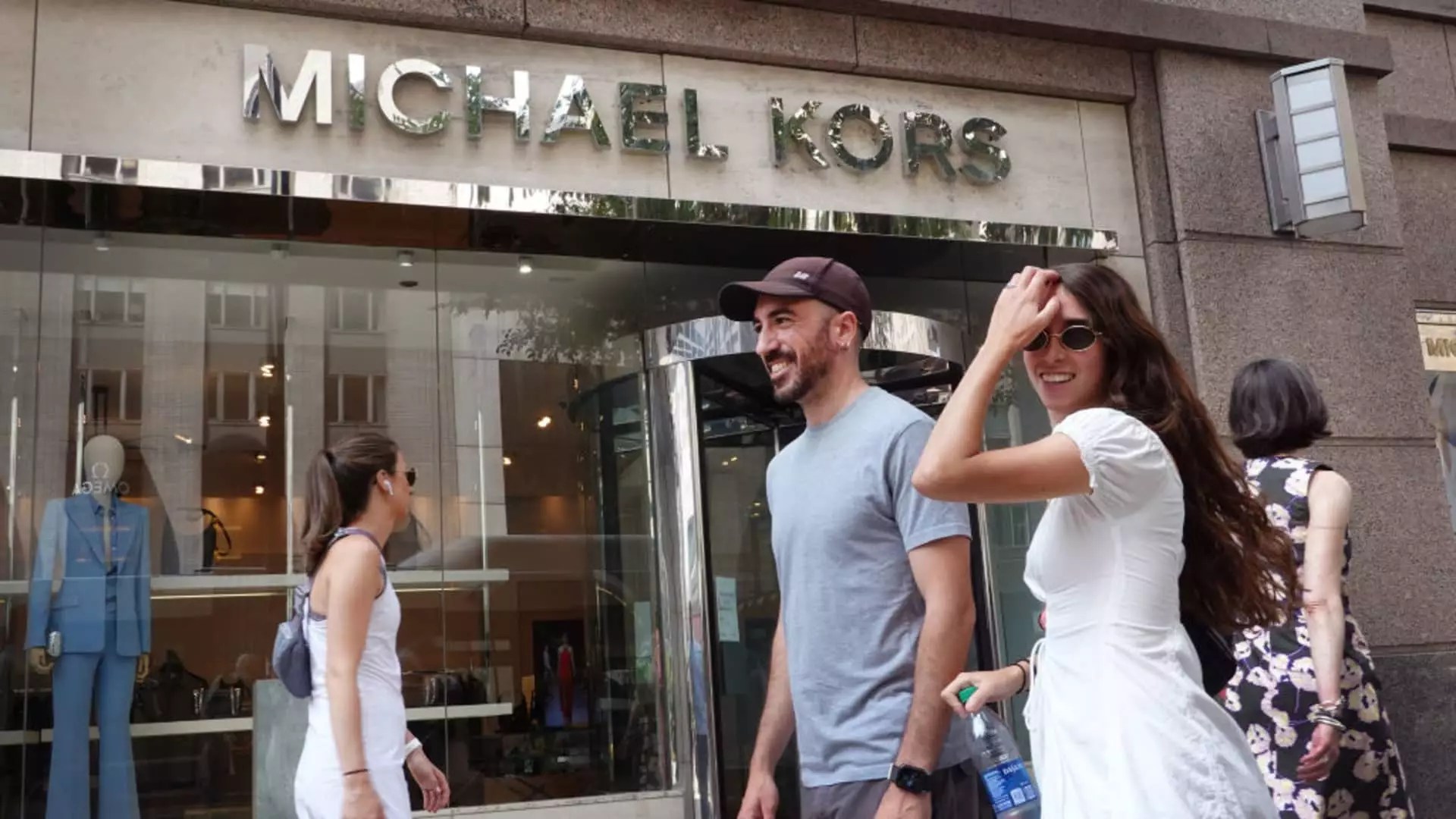The recent cancellation of the merger between luxury goods conglomerates Capri and Tapestry serves as a poignant reminder of the complexities and challenges facing corporate alliances in today’s regulatory environment. Originally announced as a strategic partnership aimed at combining significant resources and brand portfolios, the intended union, valued at $8.5 billion, has encountered insurmountable obstacles due to federal oversight. This significant decision not only reshapes the landscape of luxury fashion but also prompts crucial reflections on growth strategies within the sector.
The termination of the merger agreement was primarily catalyzed by a lawsuit from the Federal Trade Commission (FTC), which argued that this consolidation would likely disadvantage consumers and reduce employee benefits. The assertion underscores the increasing scrutiny that proposed mergers face in contemporary markets, particularly within industries that involve widespread consumer accessibility and brand loyalty. In this instance, the legal tussle escalated when a federal judge favored the FTC, issuing a preliminary injunction against the merger—a severe blow to both companies’ aspirations.
After months of negotiation and anticipation, Capri CEO John Idol acknowledged that further pursuing the merger was not in the best interests of his company. Interestingly, he asserted confidence in Capri’s long-term growth prospects, indicating that despite the collapse of the merger, there remains inherent value in its existing structure and portfolio of brands, which includes prestigious names like Versace and Jimmy Choo.
In a direct response to the breakup, Tapestry’s CEO Joanne Crevoiserat expressed a resolute stance on focusing on organic growth, indicating that the company possesses various avenues to advance without the aid of Capri. She highlighted plans for a massive $2 billion share repurchase initiative, which could bolster investor confidence and stimulate stock value. This shift towards a more aggressive growth angle spotlights how corporations must adapt to unforeseen challenges while remaining steadfast in their strategic objectives.
Moreover, Tapestry’s announcement to utilize freed-up cash resources implies a recalibration of its financial strategies. Notably, this decision reflects broader market tendencies, where luxury brands are increasingly prioritizing internal investments over potentially risky acquisitions. Such a pivot represents a strategic choice particularly relevant in uncertain economic times, as the luxury market grapples with changing consumer behaviors and heightened competition.
The immediate aftermath of the merger’s collapse had a pronounced impact on respective stock performances. While Capri’s shares tumbled by nearly half, Tapestry’s stock experienced a noticeable uptick. This juxtaposition of market reactions highlights the differentiated perceptions investors hold about the two companies’ future viability. Capri now faces the pressing task of reestablishing its market position, particularly concerning Michael Kors—a brand that has witnessed a concerning decline in sales.
In this context, Idol’s remarks regarding the implementation of strategic initiatives underscore the urgency with which Capri must innovate. The focus on enhancing brand desirability through impactful communication strategies, compelling product offerings, and an improved omni-channel consumer experience indicates a forward-thinking approach necessary for rejuvenation. This recalibration of focus may hold the key to not only reviving Michael Kors but also reinvigorating the entire portfolio of brands under the Capri umbrella.
The unraveling of the Capri-Tapestry merger raises critical questions about the future trajectory of major luxury brands. With the regulatory climate poised to continue exerting pressure on corporate consolidations, brands may need to explore alternative strategies for growth that do not rely solely on mergers and acquisitions. Such approaches might include leveraging technology for innovative retail experiences, deepening customer engagement through personalized marketing methods, and focusing on sustainable practices—a growing demand in consumer preferences.
Although the termination of the Capri-Tapestry merger might seem a setback, it also opens avenues for introspection and evolution within the luxury fashion industry. Both companies must now channel their energies into sustainable growth paths, while simultaneously adapting to a marketplace increasingly shaped by higher consumer expectations and regulatory accountability. The next chapter for these luxury titans is poised to be critically significant in determining their resilience and future success in an ever-evolving market landscape.


Leave a Reply